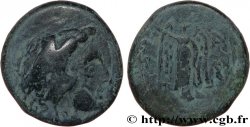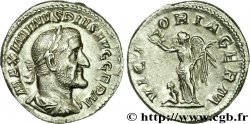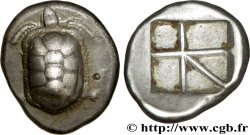v23_0107 - AEOLIEN - INSELN LESBOS - MYTILENE Hecté ou sixième de statère
MONNAIES 23 (2004)
Startpreis : 450.00 €
Schätzung : 850.00 €
unverkauftes Los
Startpreis : 450.00 €
Schätzung : 850.00 €
unverkauftes Los
Type : Hecté ou sixième de statère
Datum: c. 336 AC.
Name der Münzstätte / Stadt : Mytilène
Metall : Elektrum
Durchmesser : 11 mm
Stempelstellung : 6 h.
Gewicht : 2,52 g.
Seltenheitsgrad : R1
Kommentare zum Erhaltungszustand:
Beaux portraits. Flan légèrement taché au revers. Minuscule petit buste complet dans son carré linéaire
N° im Nachschlagewerk :
Pedigree :
Cet exemplaire provient de MONNAIES XI, 21 janvier 2002, n° 119
Vorderseite
Titulatur der Vorderseite ANÉPIGRAPHE.
Beschreibung Vorderseite Tête laurée d'Apollon à droite, les cheveux longs tombant sur la nuque.
Rückseite
Titulatur der Rückseite ANÉPIGRAPHE.
Beschreibung Rückseite Tête de Koré ou d’Artémis à droite, les cheveux tenus dans un sphendone ; le tout, dans un carré linéaire.
Kommentare
Dans MONNAIES XI, le portrait d’Apollon avait été interprété comme un buste de Dionysos (Bod. 81). Nous n’avons pas de couronne de vigne, mais bien une couronne laurée. Cet exemplaire se caractérise par l’absence du petit serpent au droit ou au revers.
In COINS XI, the portrait of Apollo had been interpreted as a bust of Dionysus (Bod. 81). We do not have a vine wreath, but rather a laureate crown. This example is characterized by the absence of the small snake on the obverse or reverse
In COINS XI, the portrait of Apollo had been interpreted as a bust of Dionysus (Bod. 81). We do not have a vine wreath, but rather a laureate crown. This example is characterized by the absence of the small snake on the obverse or reverse








 Berichten über einen Fehler
Berichten über einen Fehler Die Seite drucken
Die Seite drucken Teilen meiner Auswahl
Teilen meiner Auswahl Stellen Sie eine Frage
Stellen Sie eine Frage Einlieferung/Verkauf
Einlieferung/Verkauf
 Details
Details










